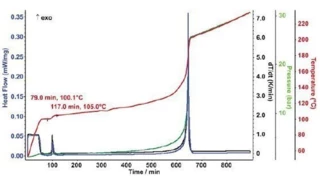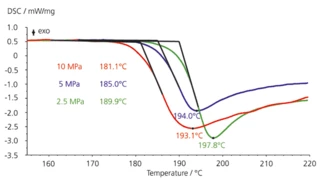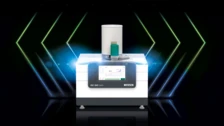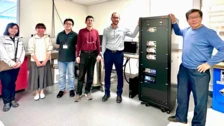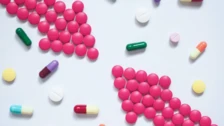
Materiais / Aplicações
Orgânicos
O comportamento de fusão e CristalizaçãoCrystallization is the physical process of hardening during the formation and growth of crystals. During this process, heat of crystallization is released.cristalização de ingredientes farmacêuticos ativos e substâncias auxiliares, a transição vítras de melaços, o comportamento de oxidação de lubrificantes ou o comportamento de cura de tintas e adesivos são efeitos térmicos aqui exemplificados.
DSC can be used to study the degree of purity of pharmaceutical active ingredients as derived from melting behavior, the OxidationOxidation can describe different processes in the context of thermal analysis.oxidation of fats and oils, or the curing of adhesives and powder paints as well as many other topics.
With TGA, information can be gathered about such topics as the denaturing of proteins, vapor pressure and solvent content of paints.
Using TMA and DMA, the coefficient of thermal expansion can be determined, and the penetration behavior and visco-elastic behavior of viscous fluids, pastes and powders can be described.
DEA can trace the flow properties of pastes and other masses, even during processing.
WithLFA, the Difusividade TérmicaThermal diffusivity (a with the unit mm2/s) is a material-specific property for characterizing unsteady heat conduction. This value describes how quickly a material reacts to a change in temperature.thermal diffusivity even of melts and liquids can be measured and the Condutividade TérmicaThermal conductivity (λ with the unit W/(m•K)) describes the transport of energy – in the form of heat – through a body of mass as the result of a temperature gradient (see fig. 1). According to the second law of thermodynamics, heat always flows in the direction of the lower temperature.thermal conductivity determined.
O grau de pureza dos ingredientes ativos da indústria farmacêutica, deriva do comportamento de fusão e oxidação de gorduras e óleos, ou a cura de adesivos e pinturas a pó, são apenas alguns dos muitos tópicos que podem ser estudados com o DSC.
Com o TG, pode-se obter informações sobre a desnaturação de proteínas, pressão do vapor e conteúdo de solvente em pinturas.
Usando o TMA e o DMA, o coeficiente de expansão térmica, pode ser determinado, e o comportamento de penetração, o comportamento visco-elástico de fluídos, pastas e pós, podem ser descritos.
O DEA pode analisar o escoamento de pastas e outras massas, até mesmo durante o processamento.
Com o LFA, pode-se até mesmo medir a difusividade térmica de líquidos e fundidos, como também se obter a condutividade térmica.
Literatura de aplicativos

